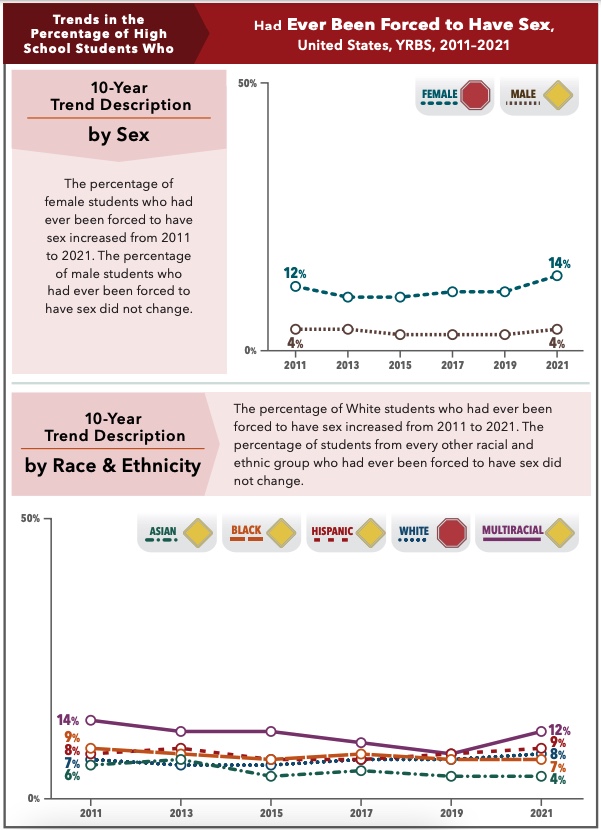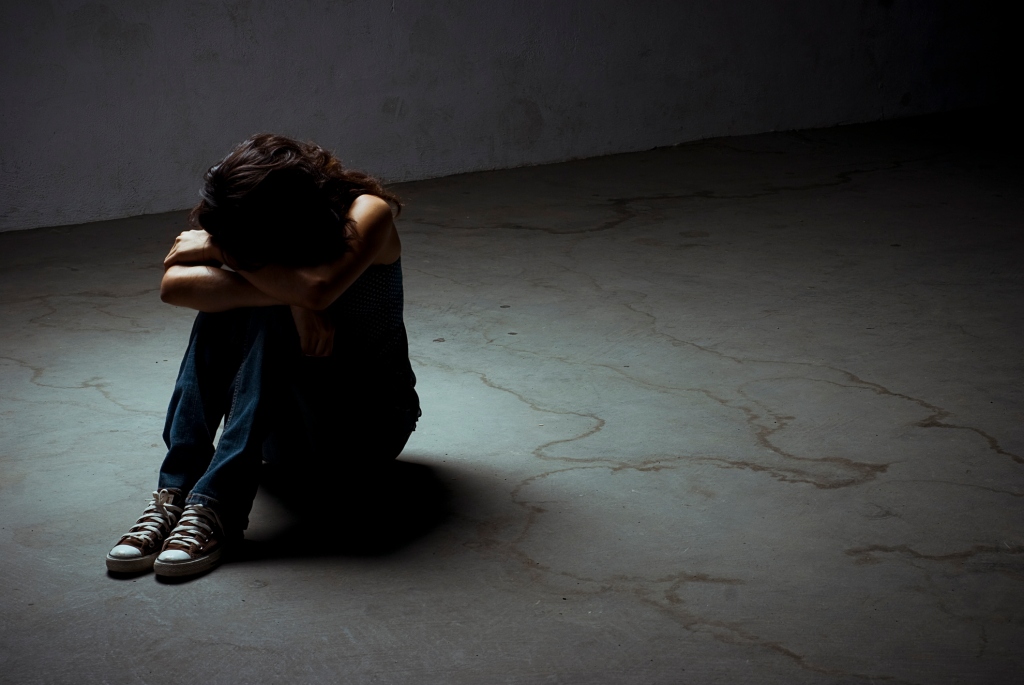Alarming number of teen girls forced into sex: CDC
An alarming number of female teens say they have been forced into sex, according to new data from the Centers for Disease Control and Prevention.
The CDC’s biannual Youth Risk Behavior Survey collects data from more than 17,000 students across 152 public, charter, Catholic, and other non-public schools in all 50 states and Washington, D.C.
The questionnaire was completed by students in 2021, marking the first of these studies to show the impact of the COVID-19 pandemic on teen behavior and victimization, researchers reported.
Results revealed that a disturbing 14% of female high school students said they had been forced into sex without giving consent — compared to 12% in 2011. The new figure represents one in seven teen girls.
“If you think about every 10 teen girls that you know, at least one and possibly more has been raped, and that is the highest level we’ve ever seen,” Kathleen Ethier, director of the CDC’s Division of Adolescent and School Health, told the Washington Post. “We are really alarmed.”
In the same time frame, male students who said they had been forced into sex remained the same at 4%.
Meanwhile, the queer community is even more at risk: One in five LGBTQ+ students, as well as 37% of students who have ever had a partner of the same gender, said they had been forced into sex.
There were also disparities among racial and ethnic groups.
American Indian or Alaska Native students were more likely than others to have been forced to have sex.
It’s important to note that these are counting for reported cases, and many sexual assaults go unreported. However, in the wake of the rise of the #MeToo movement, many students may be more likely to come forward now in comparison to 10 years ago.
But violence might also be on the rise.
During the pandemic lockdown, domestic violence cases increased, and it’s likely that sexual abuse did, too.
In March 2020, for the first time ever, minors were half of the people calling into the National Sexual Assault Hotline for help, according to RAINN.
“Unfortunately for many, and especially for children experiencing sexual abuse, ‘stay at home’ doesn’t mean ‘safe at home,’” Scott Berkowitz, RAINN’s president, said at the time.
Minors were potentially stuck at home with their abusers, while also being torn away from their safety net of school, teachers, coaches or their friends’ parents.
No matter the case, the data is concerning.
Ethier said the reports of levels of sexual victimization could be tied to the findings from the same survey that teens — particularly girls — are experiencing record-high levels dangerously poor mental health.
“Young people are experiencing a level of distress that calls on us to act with urgency and compassion,” Ethier said in a public statement. “With the right programs and services in place, schools have the unique ability to help our youth flourish.”

The survey showed that hat nearly all indicators of poor mental health among high schoolers, including suicidal thoughts and behaviors, have increased in the last decade.
Rates of anxiety, depression and suicidal thoughts particilarly “increased dramatically” among female and LGBTQ+ students.
“More than 140,000 children in the United States lost a primary and/or secondary caregiver, with youth of color disproportionately impacted,” the American Academy of Pediatrics, American Academy of Child and Adolescent Psychiatry, and Children’s Hospital Association said in a joint statement in 2021.
“We are caring for young people with soaring rates of depression, anxiety, trauma, loneliness, and suicidality that will have lasting impacts on them, their families, and their communities.”

Read the full article Here


